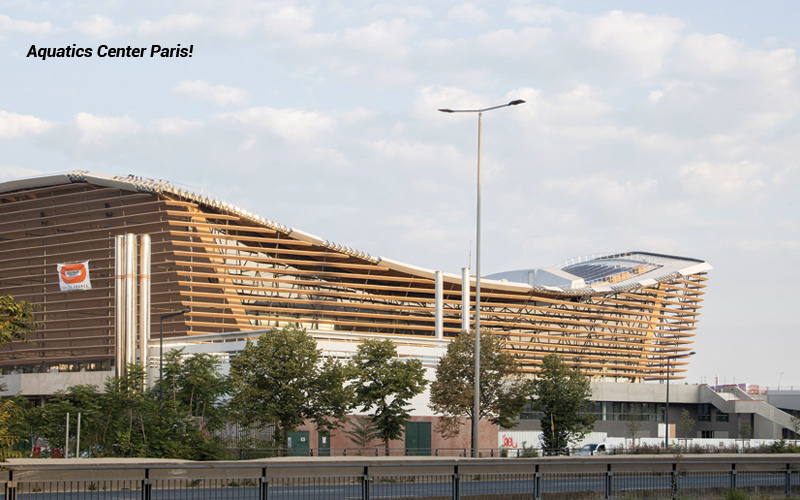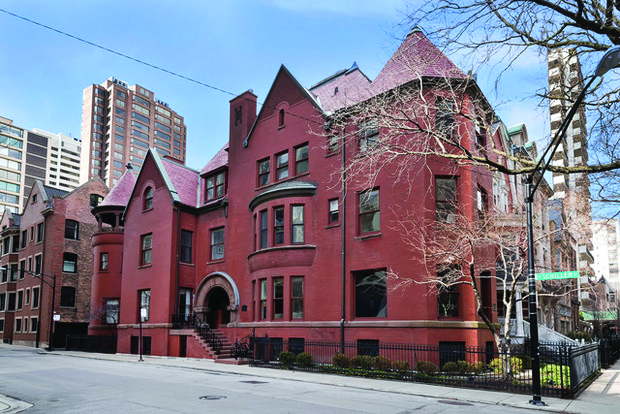The Gold Medal of Travel: Olympic Sightseeing
When I visit an Olympic City past or present,

I ask myself tourism-oriented questions: Did the Olympics improve the city’s infrastructure? Did the Olympics open up new areas for sightseeing? Did any of the Olympic buildings qualify as great architecture?
Olympics open new areas of a city and revitalize old ones. With Paris about to hold the Olympics, let’s take a look at the Olympics, past and present. We see athletes competing to get gold medals in the Olympics. However, what we don’t see is cities competing to hold the Olympics. Besides being a sightseeing boost, holding the Olympics can also result in a lifestyle boost. Part of my lecture and course “Great Planned Cities of the World” focuses on “Replanned Cities” – and a good way to achieve replanning, in at least a section of a major city, is to hold an Olympics. That’s why the competition to hold the Olympics is almost as great as the competition to win one. Many parks created for Olympics have had permanent positive impact on revitalizing cities. Before we travel abroad – lets go to Atlanta and its Centennial Olympic Park of 1996. Yes, its Olympic Park has a positive impact on Atlanta as a venue for picnics , outdoor concerts and more.
It Takes a Village – Olympic Villages becoming new towns – Going beyond Olympic Parks – Olympic Villages have become new towns. The London Olympics of 2012 is one of the best examples of the Olympic Village becoming a new town – London’s “East Village” (aka “Stratford”) with nearly 3,000 new homes and 23 new retailers – plus 1,000,000 visitors a year.
Following London’s lead to create new opportunity for new housing, the Paris Olympics is being held in the North Paris suburbs of St. Ouen and St. Denis, which are neglected and rundown – that is until the Olympic Village was built by famed French architect Dominique Perrault, not just to house athletes but post-Olympics to provide new modern housing for the townsfolk who lived in sub-standard housing.
To help achieve its humanitarian goals, Paris did not construct a new Olympic stadium It already has one of the world’s most spectacular, relatively new stadiums, the Stadt de France, which is being renovated for the games. (In fact, you might have already seen this gigantic, elegant stadium, dominating the highway linking Paris to Charles de Gaulle Airport.) Since Paris is known for its many bridges across the Seine – if you take a (foot) bridge (over a street) next to the Stadt de France – you’ll arrive at the only building built just for the Olympics – the striking Aquatics Center also in St. Denis.
Paris is not the first Olympics that is reusing a stadium. The Rio Olympics of 2008 and the Rome Olympics of 1960 set precedent. The stadium for the 1992 Barcelona Olympics was built in 1928 and was renovated for the Olympics. Just because a city doesn’t erect a new Olympic stadium doesn’t mean that the Olympics didn’t improve the city and increase tourism. Before the Olympics, Barcelona’s elegant wide main street, Las Ramblas, essentially ended in a rotary dominated by a statue of Cristopher Columbus, turning his back on the eyesore at the end of the Mediterranean. The Olympics gave the incentive to clean up Barcelona’s dilapidated Mediterranean beaches, making them a showplace with great hotels and restaurants.
The Los Angeles Olympic Stadium of 1932 hosted the 1984 Olympics and is due to host the 2028 Olympics – they’re really getting their money’s worth out of that old stadium. The contribution that the 1932 LA Olympics gave to Los Angeles was freeways. The contribution that the 2028 Olympics will give to LA is (finally) new mass transit.
Olympics and mass-transit Improvements – For the Olympics of 2004, Athens got its first subway. For the (Winter) Olympics of 2006 Turin got its first subway. For the 2000 Olympics Sydney got its first subway and a rail link to its airport. For the 2008 Olympics Beijing expanded its subway lines from 3 to 7 and added a rail link to its airport. Paris which has one of the world’s best subways and keeps on expanding its Metro regularly with new lines. For this year’s Olympics Paris has created a new Metro line linking Orly with trains to Paris in just 16 minutes. A magnificent new Metro station, St. Denis Pleyel, will be opening for the Olympics along with an extension of Metro line14 to serve it.
Sightseeing great Olympic Architecture – Besides Olympics bringing new life to old cities and bringing life to new sections in old cities – every time there’s an Olympics, there’s another less publicized competition, the competition to build the Olympic Village, the Olympic Park and Olympic Stadiums (plural – since an aquatic stadium is now de rigueur (French expression used in homage to the upcoming Paris Olympics.)
The 1964 Olympics Stadium, Tokyo – Was designed by the great Kenzo Tange. In an aerial shot, it looks like two “dialogue bubbles” in comics colliding. From the side, it looks as if it’s an elegant tent rising.
The 1972 Olympiastadium, Munich – The stadium won critical acclaim. (From an aerial shot, it looks to this architectural historian more like a “Tent City.”) However, its history overshadows its architecture. Eleven Israeli athletes and a German security guard were murdered there. Which brings us to the next German Olympic stadium in which history overshadows architecture . . . .
The 1936 Olympic Stadium, Berlin – Is worth a visit just to see one of the few preserved, grandiose buildings of the Third Reich. (Its location far from city center Berlin – which was devastated by Allied bombing – ensured its survival almost intact.) The Berlin Olympic Stadium is infamous due to the racist Adolph Hitler’s abruptly walking out so he wouldn’t have to congratulate the Black American Gold Medal winner, Jesse Owens.
The 1976 Olympic Stadium, Montreal – By French architect Roger Taillibert. The Leaning Tower of Pisa is the world’s most famous “Leaning Tower.” However, the 541-foot leaning tower slanted over the stadium is by far the tallest. The tower also holds the cables for converting the open stadium into a covered one (which was the initial intention to lure a major-league baseball team to Montreal – to keep the crowds warm.)
The 2008 Olympics Beijing • The Olympic stadium – Is well known and so well received it even earned a nickname, “The Bird’s Nest.” It’s designed by the famous Swiss architecture firm Herzog & de Meuron.
The 2008 Olympics Beijing – The National Aquatics Center — also has a nickname – “The Water Cube.” Its sides and roof are covered with gigantic protruding “bubbles” in a bright blue. (I wonder whether the stadium is “The Bird’s Nest,” once hatched, do the birds swim in the National Aquatics Center?)
The 2012 Olympics London – The Aquatics Center by world-famous Zaha Hadid – with her world-famous graceful flowing lines to inspire the strokes of the Olympics’ swimming athletes.
The 2024 Olympics Paris –
The Basilica of St. Denis – One of the great undiscovered sties near Paris. It’s the Westminster Abby of France. Every time I’ve visited whether alone, with architecture students or with my commercial tours – sadly it’s been empty. It’s great for several reasons. You just finished reading about the great Olympic architecture. However, one of the greatest architectural movements in history originated in St. Denis – Gothic Architectures. In the mid-12th century, St. Denis’ Abbot Suger helped to create the “pointed “ arch, which brings in more light – and the arch points upward – to heaven.
Above all, (or rather below all – buried underground) St. Denis is the burial place of the Kings and Queens of France. And since most tombs also have sculptural images of the deceased rulers resting on a stone coffin (a trend started by the Ancient Etruscans), St. Denis also doubles as a sculpture museum. (I’m amazed by the effigy of Marie Antoinette who was guillotined in 1793 and is depicted wearing an empire high-waisted slim dress made famous by Empress Josephine in the 19th century.)
Speaking of “Surprises” – I’m hoping that I live long enough to see NYC get the summer Olympics so Manhattan will finally have a rail link to its major airports!





